Satellite crash – live: Out-of-control ERS-2 falls to Earth
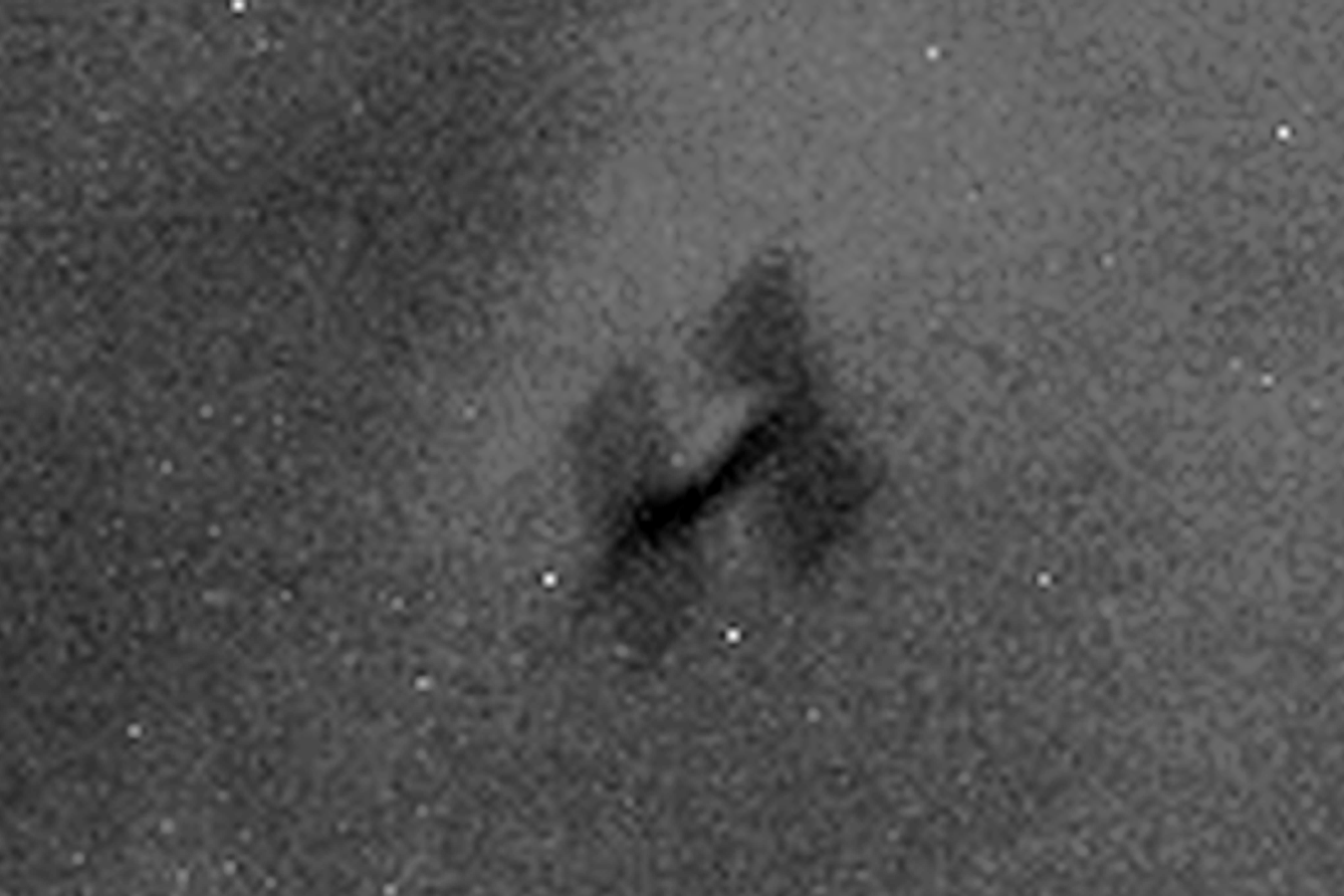
Your support helps us to tell the story
From reproductive rights to climate change to Big Tech, The Independent is on the ground when the story is developing. Whether it's investigating the financials of Elon Musk's pro-Trump PAC or producing our latest documentary, 'The A Word', which shines a light on the American women fighting for reproductive rights, we know how important it is to parse out the facts from the messaging.
At such a critical moment in US history, we need reporters on the ground. Your donation allows us to keep sending journalists to speak to both sides of the story.
The Independent is trusted by Americans across the entire political spectrum. And unlike many other quality news outlets, we choose not to lock Americans out of our reporting and analysis with paywalls. We believe quality journalism should be available to everyone, paid for by those who can afford it.
Your support makes all the difference.An out-of-control satellite has fallen to Earth, nearly three decades after it launched.
The ERS-2 satellite, which served as an observation platform after launching in 1995, landed in the Pacific Ocean between Alaska and Hawaii on Wednesday.
The European Space Agency (ESA) said the risks associated with the two-tonne satellite were “very low”, however there was still a chance that fragments could hit populated areas.
Mirko Albani from ESA’s Earth Observation Ground Segment Department said: “It’s worth highlighting that none of the elements that might re-enter the atmosphere (and reach the surface) are radioactive or toxic.”
The predicted time for the satellite entering the Earth’s atmosphere was originally 3.49pm GMT (10.49 EST) on Wednesday, however it remained orbiting the planet for up to an hour.
You can follow all the latest news, updates and developments of the ERS-2 satellite as it heads towards Earth in our live blog below.
Satellite crash live: ESA confirms ERS-2 reentry
The European Space Agency has finally confirmed that the two-tonne satellite reentered the Earth’s atmosphere somewhere between Alaska and Hawaii.
Hello and welcome...
to The Independent’s live coverage of the ERS-2 satellite. Nearly 30 years after it launched, and 13 years after it was decomissioned, the satellite is finally set to return to Earth.
At any point between midday and 9pm GMT on Wednesday (7am to 6pm EST), the space junk could re-enter the Earth’s atmosphere.
While most of it will likely burn up, the European Space Agency (ESA) has warned that there is still a chance of fragments crashing into populated areas.
You can follow all the latest updates right here.
Satellite crash live: What was ERS-2’s mission?
The ERS-2 satellite has been out of service since 2011, having launched from Europe’s Spaceport in French Guiana on 21 April, 1995.
Alongside its sister satellite ERS-1, it has been described as the “grandfathers of Earth observation” in Europe, offering never-before-seen insights into the Earth’s climate and environment.
Both satellites carried a Synthetic Aperture Radar (SAR) and a radar altimeter for studying sea surface temperatures and winds, while the ERS-2 also carried a sensor for atmospheric ozone research.
This gave scientists the ability to monitor the Earth’s protective ozone layer in new ways, while also contributing to our understanding of how climate change is having a significant impact on ocean-surface temperatures.
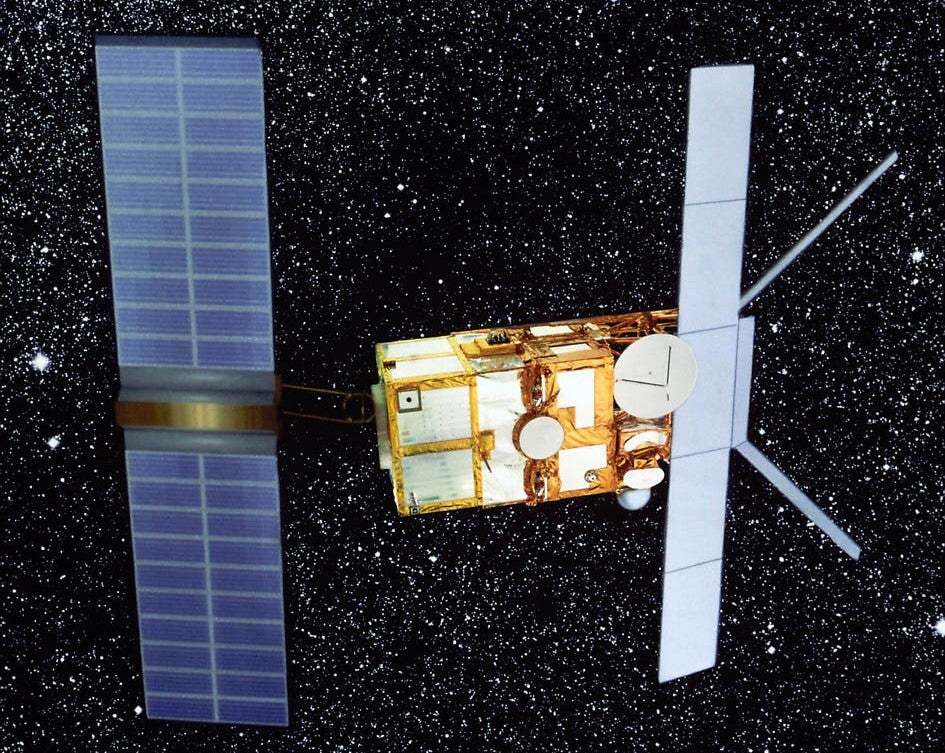
Satellite crash live: When will ERS-2 fall to Earth?
The latest update from the ESA states that the ERS-2 will re-enter the Earth’s atmosphere at approximately 4.32pm GMT (11.32pm EST) on Wednesday.
This prediction, made using data acquired on 20 February, has an uncertainty of +/- 4.61 hours, meaning it could fall any time between midday and 9pm.
“This uncertainty is due primarily to the influence of unpredictable solar activity, which affects the density of Earth’s atmosphere and therefore the drag experienced by the satellite,” the space agency states.
As the reentry time approaches, the uncertainty window decreases, so we should get an increasingly clear idea of when to expect ERS-2’s arrival as the day progresses.
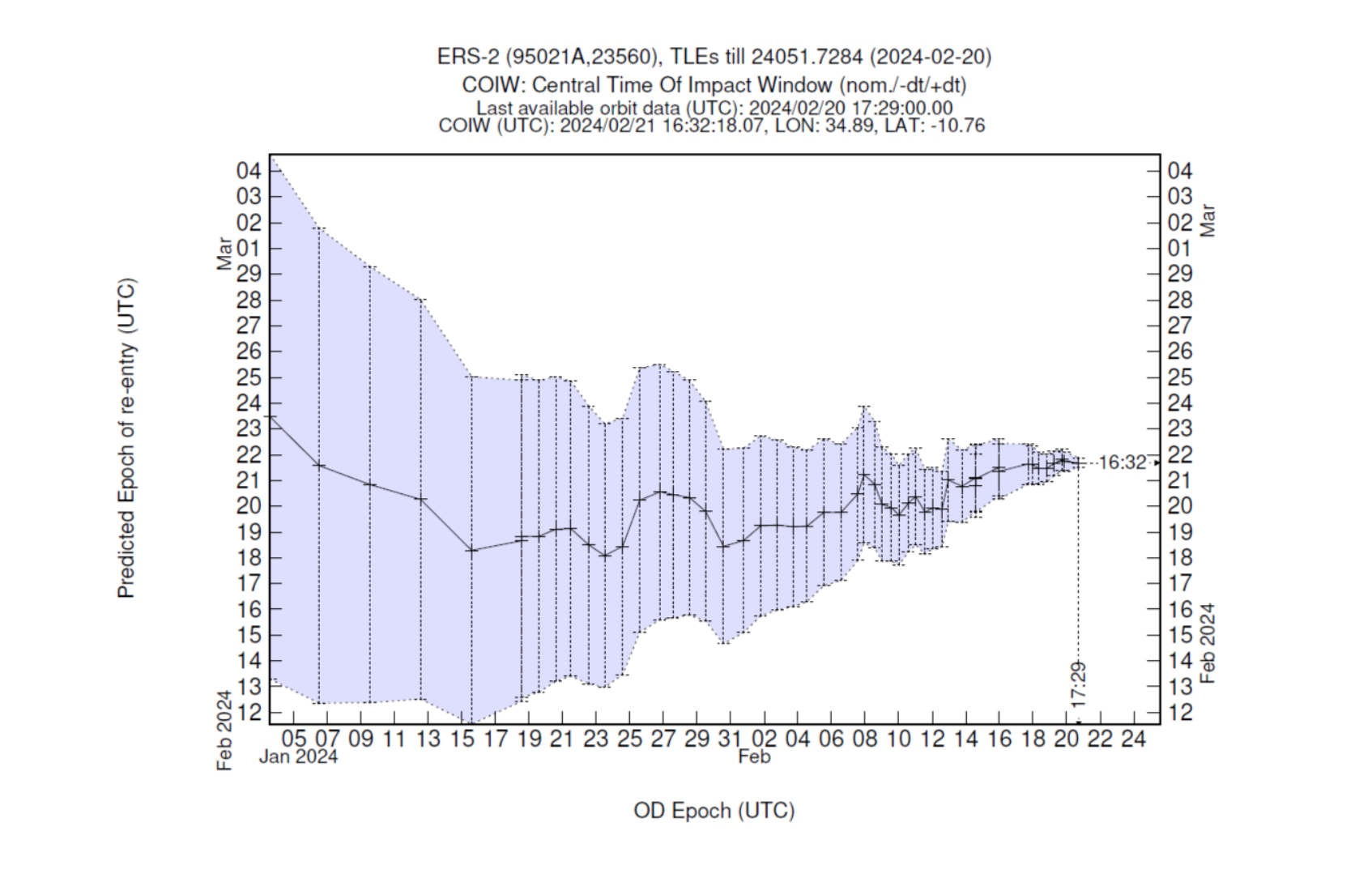
Satellite crash live: Where will ERS-2 fall to Earth?
Just like predicting the time that the ERS-2 satellite will reenter the Earth’s atmosphere, predicting the place also requires a bit of guess work.
The current predicted time of 4.32pm GMT would put the satellite’s reentry over east Africa, as shown by the red marker on this map.
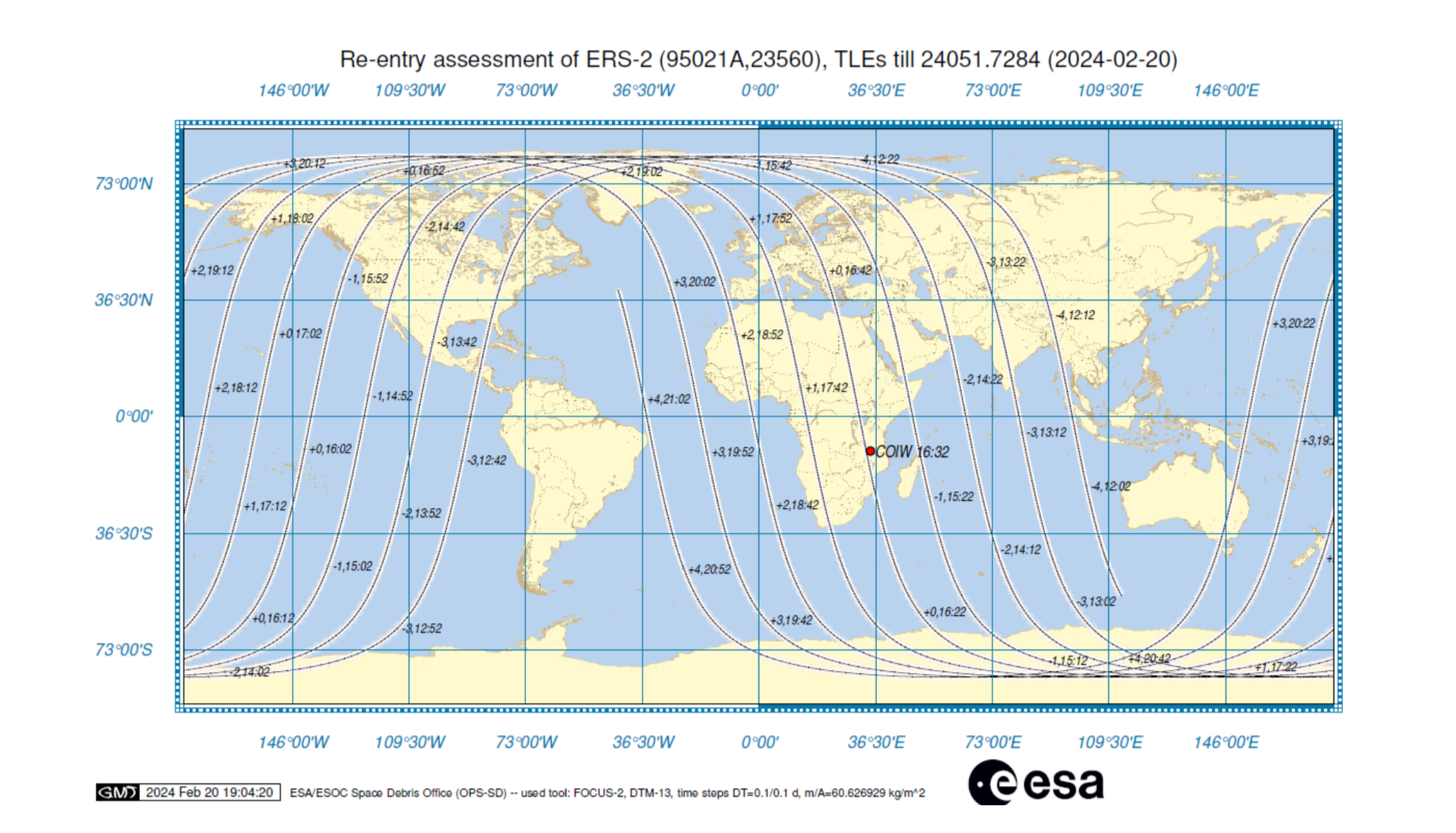
However, given the nine hour window in which it could fall, the satellite could fall along any of those lines, which also cross Europe, North America, Asia and parts of Oceania.
“The ground track passes over a wide range of latitudes due to the nature of ERS-2’s important mission,” the ESA notes on its satellite tracking site.
“ERS-2 was designed to shed light on Earth’s changing climate at a time when humankind’s impact on the environment was not understood as well as it is today. To achieve this, ERS-2 was placed into a ‘Sun-synchronous’ orbit – a type of polar orbit that allowed it to pass over and study a large portion of Earth’s surface.”
Satellite crash live: What will happen to ERS-2 when it reenters Earth’s atmosphere?
The two-tonne ERS-2 satellite is one of the larger pieces of space junk to reenter the Earth’s atmosphere in recent years, meaning it is unlikely that all of it will burn up upon reentry.
The European Space Agency warns that it will break up into fragments around 80 kilometres above the Earth’s surface, with whatever remains then falling across a huge area.
The space agency states: “The vast majority of the satellite will burn up, and any pieces that survive will be spread out somewhat randomly over a ground track on average hundreds of kilometres long and a few tens of kilometres wide.”
None of the fragments that do make it to Earth will contain any toxic or radioactive substances, though there is still potential risk that the projectiles could cause damage or even injury. According to the ESA, this risk is “very, very low”.
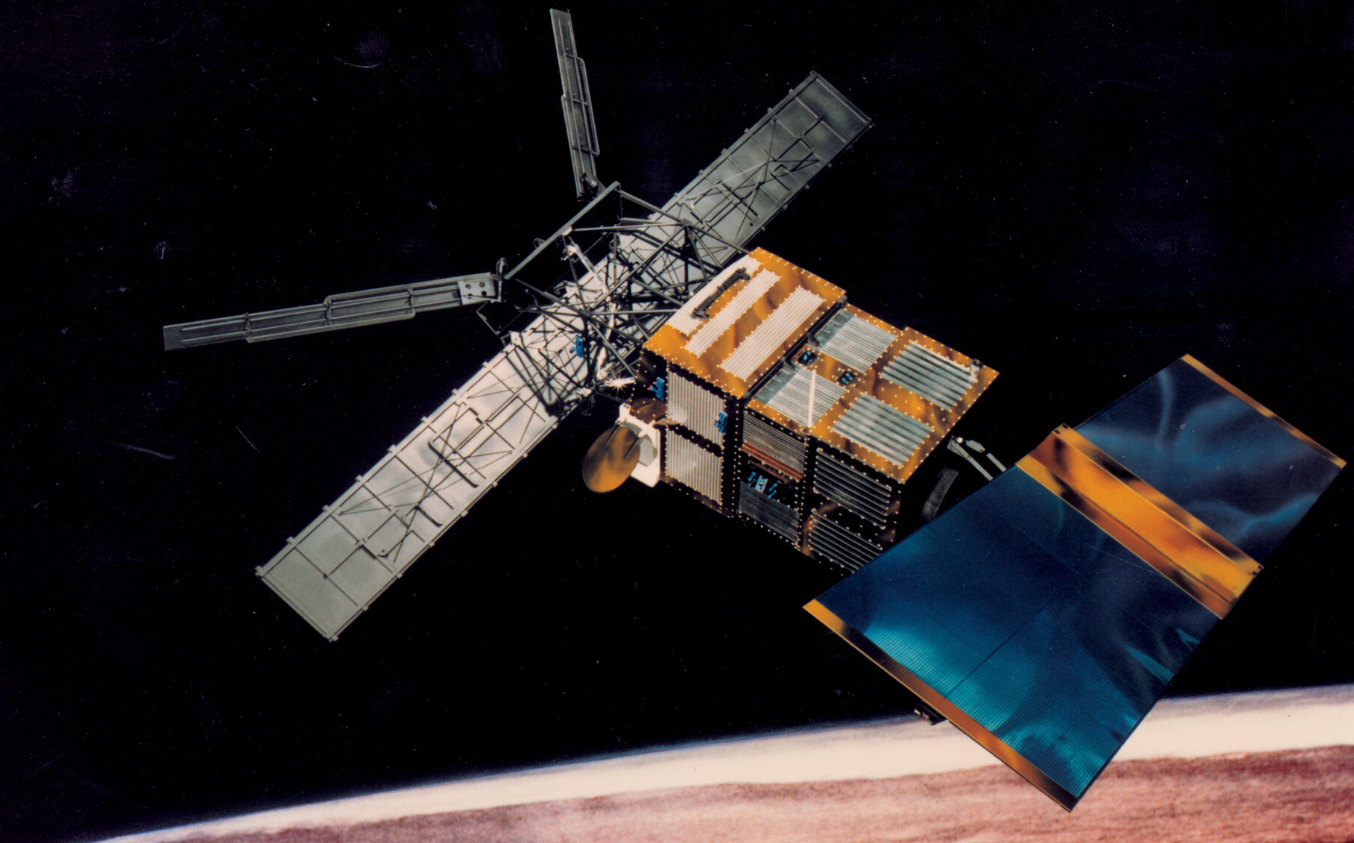
Satellite crash live: What’s the chance of being hit by space junk?
It’s hard to calculate exactly how much space junk falls into Earth’s atmosphere each year, though estimates from the US National Oceanic and Atmospheric Administration (NOAA) suggest it is between 200-400 tracked objecs each year.
Some objects are able to enter in a controlled way by using any onboard fuel reserves to aim into the ocean, though satellites like ERS-2 have no such option.
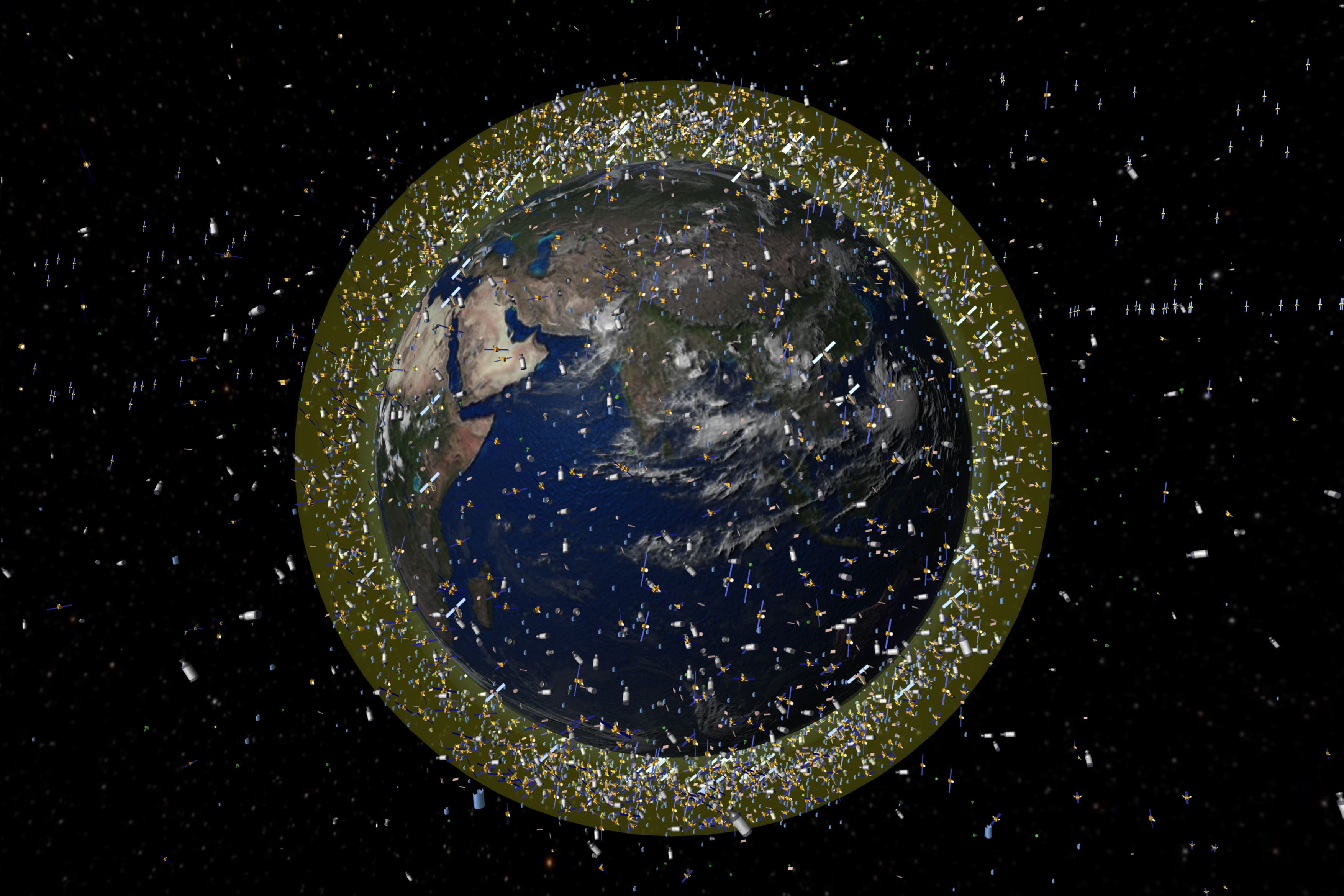
Despite their out-of-control nature, the risk of actually being hit by a piece of space debris falling to Earth is around 1 in 100 billion.
This is:
- ~1.5 million times lower than the risk of being killed in an accident at home
- ~65,000 times lower than the risk of being struck by lightning
- ~three times lower than the risk of being struck by a meteorite
Satellite crash live: ESA updates time of reentry prediction
The European Space Agency (ESA) has recalculated the predicted reentry time for the ERS-2 satellite.
ESA scientists now estimate that the satellite will enter the Earth’s atmosphere at 15.49 GMT (10.49 EST), roughly 45 minutes earlier than previously anticipated. The uncertainty window has also narrowed to just +/- 1.76 hours, meaning it could fall any time between 2pm and 5.30pm on Wednesday.
The closer we get to the actual moment of reentry, the more accurate the prediction will be.
Here’s the latest prediction:

Satellite crash live: ESA revises ERS-2 reentry point
The ERS-2 satellite is no longer expected to fall over east Africa, with the ESA’s updated forecast putting its reentry point over the Pacific Ocean. This is where most decommissioned satellites end up when their operators are able to control it, so this would be an ideal spot. Unfortunately, there’s still a big window of error that could see it crash over the US or Europe.
“At the current predicted time of reentry, 15.49 GMT, 21 February, ERS-2 will be located approximately 80 km over the red marker, labelled COIW (centre of impact window),” the update states
“It is here that we currently expect the satellite to begin to break up. The vast majority of the satellite will burn up, and any pieces that survive will be spread out somewhat randomly over a ground track on average hundreds of kilometres long and a few tens of kilometres wide.”

Satellite crash live: ESA estimates reentry close to US
Another update from the European Space Agency has revised the satellite’s expected reentry point to just off the west coast of the US.
This may be the final update before the ERS-2 reentry, the space agency said.
Join our commenting forum
Join thought-provoking conversations, follow other Independent readers and see their replies
Comments